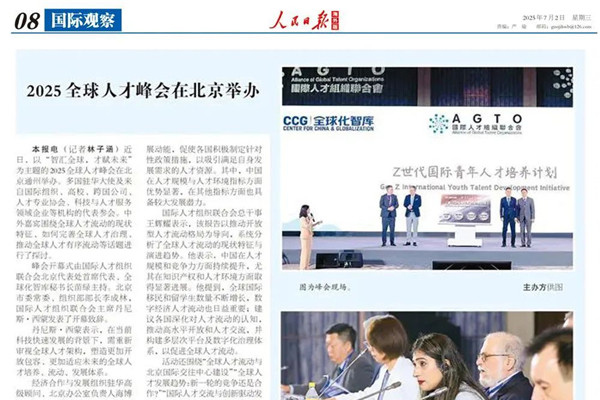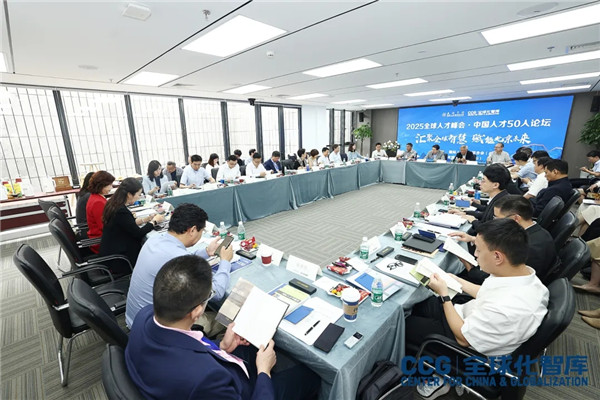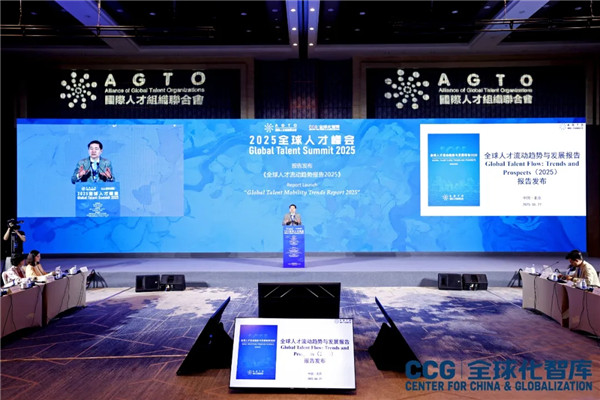【Washington Post】Are think tanks obsolete?
2015年10月10日
Sen. Elizabeth Warren (D-Mass.) speaks in February during a hearing. Warren’s letter to the Brookings Institution highlighted the challenges facing think tanks. (Alex Wong/Getty Images)
If we think about Washington the way we think about Detroit, then the organizations that line Massachusetts Avenue are like the capital’s factories. Only in D.C.’s case, the buildings are think tanks and what are chugging out the doors are ideas, not automobiles.
With their multimillion-dollar budgets, thousands of employees and access to power, it’s tempting to think of think tanks as juggernauts impregnably dominating their market, just as we once saw the automobile industry.
But what if the opposite is true? What if think tanks today are more like the Detroit of the 1990s than of the 1950s? What if they, too, are facing existential threats they don’t quite understand and aren’t very well prepared to deal with? In fact, what if the think-tank establishment is like a whole host of other industries — including newspapers and television — that are struggling against forces beyond their control? What if bloggers, YouTube, sound bites, social media, TED talks, metrics, changing business models and even rogue players who create their own narratives represent the same menace to think tanks as they do to mainstream media? What if the upstarts are to think tanks what Datsun, Toyota and Hyundai were to Ford, GM and Chrysler: small, fast, annoying competitors, easy to ignore, disrespected by the establishment — and ultimately very effective guerrilla warriors?
And what if, as with other idea industries such as film, broadcast and all news media, the quest for a new business model and for more robust sources of funding or revenue is — as would-be presidential candidate Elizabeth Warren charged last week — blurring once brighter lines and threatening intellectual credibility?
[How Elizabeth Warren picked a fight with Brookings — and won]
This being the ideas business, naturally there are think tanks whose job it is to study think tanks. Some of them think that think tanks aren’t immune to such pressures — and that not all of them are stepping up equally to the challenge.
“The old adage ‘research it and write it and policy makers will beat a path to your door,’ is no longer the case,” says James McGann, director of the Think Tanks and Civil Societies Program at the University of Pennsylvania, who has been following think tanks for more than 25 years. “The news and information cycle is accelerated. The time span for doing research and the traditional way of publishing it — books and journals — is totally out of synch” with the way people are getting information now, he says. "That’s the existential challenge for those involved in pushing ideas."
“The marketplace of ideas has become congested,” agrees Donald Abelson, a professor at the University of Western Ontario who has written a book called “Do Think Tanks Matter?” (His conclusion is ultimately a qualified yes.) He agrees with McGann that these idea organizations are "struggling to be heard. Just because you have a multimillion-dollar budget doesn’t mean you can influence policy," he says.
The concept of a “think tank” goes back to the turn of the century, when several industrialists-turned-philanthropists saw that the much leaner, less professional government of the era needed to have a sort of a brain trust. The institutions named for these benefactors, such as Carnegie and Brookings, were later joined by ones named by other founders, such as the Peter G. Peterson Institute and the Pew Charitable Trusts, or for iconic statesmen such as the Wilson Center, the Hoover Institution, or for the kinds of things they advocated — Open Society, Human Rights Watch, Center for American Security.
McGann’s group at the University of Pennsylvania calculates that the United States dominates the think-tank industry with 1,830 institutions, or 28 percent of the world’s total (the next highest country is China with 429). Washington hosts nearly a quarter of U.S. think tanks. In 2013, the top 21 think tanks alone spent more than $1 billion and employed more than 7,000 people.
If their principal product is ideas, their goal is influence. “Our number one goal is to have impact on policy,” says Andrew Schwartz, a senior vice president at the Center for Strategic and International Studies.
So what’s changed in think tanks’ landscapes?
New competition: Where think tanks boast of social media readership in the hundred or thousands, a TED talk by Bryan Stephenson, a lawyer and founder of a fair sentencing group, on criminal justice — a hot topic right now — has been watched more than 2.5 million times. “His talk on TED is impacting policy,” says McGann. “There are non-traditional means of thinkers getting out ideas that transform policy.”
Think tanks are also finding that their calling cards — research, expertise, thoughtful analysis, long and thorough arguments — are coming up against informal groups with passionate messages who can go toe to toe with big players in ways they never could before. Rand Corporation, the biggest of the American think tanks, can do a thoroughly researched paper debunking the idea that vaccines cause autism. The Council on Foreign Relations can create an interactive map of vaccine-preventable diseases around the world. Yet groups such as Educate Before You Vaccinate, with 13,000 Facebook members, keep the debate going even in the face of outbreaks of preventable diseases such as measles.
“There is a lot more noise out there,” says Elizabeth Boswell Rega of the German Marshall Fund. The trick is, she says, is to figure out how to break through the noise. While acknowledging the competition, some say they believe serious scholarship will triumph. The discussion is “much more open,” says Jessica Tuchman Mathews, a distinguished fellow at Carnegie Endowment for International Peace who for 18 years served as its president. “It’s also open to crummy stuff … crazy, bad, sloppy. But I think over time the quality in the think tank world does get recognized.”
Social media: The future of think tanks, given the goal of influence, is rooted not in 100-page reports but in tweets, Facebook shares, video clips, slick Web sites with downloadable information and podcasts. It’s not as though think tanks are blind to these changes. Some are trying their hardest to move to the new world. CSIS, for example, boasts of a tech-company-like “ideas lab” and a fancy and soon-to-be-upgraded Web site and has created its own television and radio studio. “We have become our own media company,” says Schwartz.
Former congresswoman Jane Harman saw firsthand what changing audience and changing technology could do to a once-thriving enterprise. (She and her late husband, Sidney Harman, bought Newsweek magazine for $1 in 2010, only to kill the print edition and sell it as an online-only business three years later.) When she left Congress in 2011 to head the Wilson Center, she found that the institute’s flagship publication, the Wilson Quarterly, had 67,000 subscribers, a large number of them longtime readers. “I’ve seen this movie before,” she says: “a declining, aging readership.” Wilson killed the print publication, created a new online version and now has 300,000 subscribers, more than half of them younger than 30.
But if there is one lesson to be learned from the newspaper industry, it’s how hard it is to change the habits of key players — even with with locomotive speed. “We know we are moving to a social media world but our scholars and board don’t understand social media,” says one person in charge of implementing the switch. “We’re in a new world.”
The culture of think tanks is still deeply rooted in reports and books. The lobbies and offices of many think tanks are jammed with books produced by their scholars. While the Brookings Institution boasts new blogs and Web offerings, its Web site still offers more than 2,800 book titles on subjects ranging from “Azerbaijan and the New Energy Geopolitics of Southeastern Europe” to “Labour Markets, Institutions and Inequality.”
Yet as think tanks speed up their responses, with e-mailed newsletters and tweeted reactions, they risk losing the originality and scholarship that most pride themselves on and risk becoming lost in the blizzard of similar notifications.
Threats to independence?: A decline in funding for think tanks from larger institutional sources has pushed them to seek more funding from corporations, individuals and foundations, says McGann. Alejandro Chafuen, president of Atlas Network, writes in Forbes that the 2008 financial crisis also cut into foundation funding. That has led to increasing dependence for funding on donors who have a stake in the outcome of research.
That, in turn, brings threats from all sides. On the one hand, there is the threat of actual intellectual interference from donors, as a lengthy New York Times investigative piece last year charged. On the other hand, there is the additional threat of attack from those who see such funder bias. Last week Elizabeth Warren lashed out at a paper critical of her consumer protection rule, accusing its author of being influenced by his mutual-fund sponsor.
The author, economist Robert Litan, denied the charge, yet resigned his unpaid post anyway. Brookings, in a statement, said that Litan’s resignation was accepted because by testifying before Congress on research done for his employer he violated a policy prohibiting nonresident scholars from using the Brookings affiliation for Congressional testimony*.
Increasingly as well, even donors with no political agenda are demanding to shape the research in the name of efficiency, effectiveness and impact. “In the old days, donors gave unrestricted money to think tanks, and said ‘you guys know what you’re doing. Think the big ideas,’ ” says McGann. Now major donors have shifted away from money that can be used by the institution to do with what they like to money that is earmarked for specific programs.
“Think tanks own their agenda less than they used to,” says Ellen Laipson, who recently stepping down as president of the Stimson Center to become a distinguished fellow. Even when the ideas are “worthy,” she says, the fact that funders are more interested in donating only to causes or issues they choose raises questions. “Who owns the knowledge? Who sets the agenda? How much true independence is there?”
One result has been an increased push to have think tanks be more open about the sources of their funds. One organization — Transparify — publishes an annual report grading think tanks on how much information they disclose about where their money comes from.
Drive for impact: Foundations’ desire to see the result of their donations puts think tanks smack in the path of a trend by funders to measure the outcome of programs. The Bill and Melinda Gates Foundation, for example, was part of a group that five years ago pledged $90 million to support African think tanks. The Gates Foundation has had a strong influence on a wide range of donors with its focus on quantifying and measuring goals.
It’s hard to tell who did what. “Every successful policy idea has 100 mothers and fathers,” says Abelson. “The problem is that when you get into which policy came from which think tanks, in some cases, many think tanks will take credit for the same idea.”
Because impact is so hard to measure in an ideas business, the drive to quantify has had two effects: One is to focus giving on smaller and smaller goals where the impact on policy discussions can be more clearly discerned. Laipson cites work Stimson did on preventing nuclear materials from falling into the wrong hands. Eventually, because of the desire to see impact, they focused on creating incentives for insurance companies that deal with commercial items that could be used in nuclear weapons. “It’s micro stuff,” she says, “several steps away from the big idea. Did we make the world a safer place? We can’t say.”
The other is to measure the public appearance of think tanks. Where the number of books and reports and mentions in the press were once the way think tanks were evaluated, Chafuen, of Atlas, offers an analysis of which think tanks excel in Facebook likes, tweets and YouTube views.
Ideological gridlock: Finally, gridlock in government makes it harder for think tanks’ ideas to get heard. Short election cycles mean what McGann calls a “policy tsunami” every two years, which also leads to a crowded field and short attention span for the officials who are natural consumers of think tanks’ analyses.
The increased polarization of government reduces officials’ desire or need for deep research. When positions are increasingly hardened on an ideological basis, some members of think tanks complain that what officials are now seeking is more ammunition than analysis. “No one is interested in substance,” says an official at one big think tank. “It’s very hard to get the attention in Congress if it’s a serious idea. They see [things] in black and white.”
“The business model in Congress is broken,” says Harman, herself a former member of Congress.
* After the Brookings Institution wrote in to clarify their policy, we updated the text. Previously, the article stated that Litan violated a policy prohibiting ” the use of the Brookings affiliation when presenting non-Brookings work.”(By Amanda Bennett)
From The Washington Post,Oct 5, 2015






